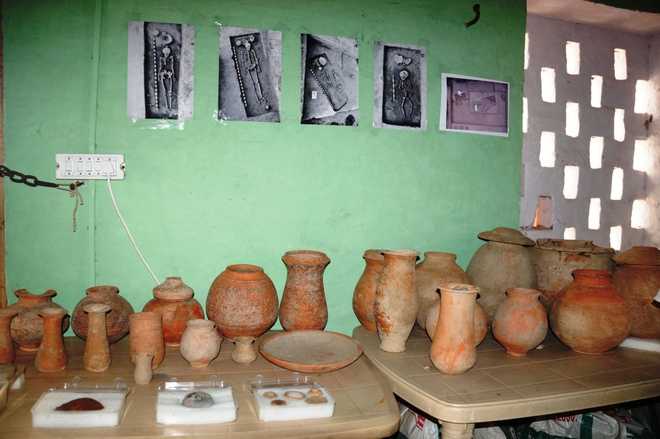Democracy has roots in Harappa
Deepender Deswal
Tribune News Service
Rakhigarhi (Hisar), May 8
The concept of democracy and welfare state has their roots in Indus Valley Civilisation, so suggest the analysis of two-year excavation at an ancient Harappan site in Hisar’s Rakhigarhi village.
The excavation points out that the panchayat system is 5,000 years old.
The Haryana Archaeological Department and Deccan College, Pune, have been excavating at the site spread over 550 hectares.
Prof Vasant Shinde, Vice-Chancellor, Deccan College, said here today that evidence of a city state or rule of a king like in Egypt or Mesopotamia was not found anywhere in Harappan sites across the Asian subcontinent.
“There are striking similarities in the lifestyle and socio-culture behaviour of people of Indus Valley Civilisation and that of modern civilisation. The study has revealed that Haryana people are descendents of Harappan people. Walking in present-day Rakhigarhi gives an impression that we are in a Harappan village,” the VC said.
The remains of earthen pottery, house building structure made with cross bricks, drainage system, water conservation and chulha (traditional firewood stove) found at the site had striking similarities to the modern times, claimed Prof Shinde.
“We found no palace-like structure or evidence of a rule of a king anywhere in Harappan sites. Unlike Egypt, people of Indus civilisation did not waste their resources and forced common people to create structures such as pyramids which symbolise slavery,” said Arvind Prabhakar Jamkhedkar, Chancellor, Deccan College.
Deccan College is a deemed university.
He said civil engineering and houses built of bricks were first conceptualised during the Indus civilisation and the technology had travelled to other contemporary civilisations. “Then, people of had trade relations with Iran, Afghanistan, and even Egypt and Mesopotamia.”
Jamkhedkar said the Indus civilisation had flourished more in the Saraswati river basin than near the Indus river. “Cross-bricked technique was used in Egypt during 3000 BC. It was prevalent in Indus during 5000 BC.”
On human figurines recovered from the site, the Chancellor said people then wore jewellery. “A university in South Korea has developed a software that will reconstruct complete human characteristics by feeding into it the data of morphological features. I will visit South Korea in June.”
“We are close to a breakthrough to reconstruct the lives of people of the Harappan civilisation. The excavation has failed to answer several questions related to these people. DNA samples are being analysed by South Korea’s Seoul National University College of Medicine, and Centre for Cellular and Molecular Biology, Hyderabad. The similar investigation will be carried out at Howard University, Cambridge University andthe Copenhagen University in Denmark,” Shinde said, adding the results would be published in ‘Nature’ or ‘Science’ magazine.









